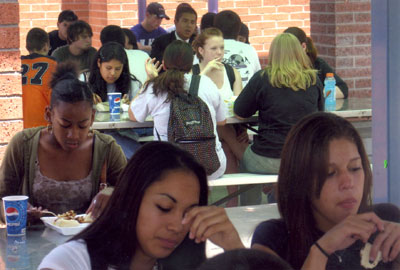All Nonfiction
- Bullying
- Books
- Academic
- Author Interviews
- Celebrity interviews
- College Articles
- College Essays
- Educator of the Year
- Heroes
- Interviews
- Memoir
- Personal Experience
- Sports
- Travel & Culture
All Opinions
- Bullying
- Current Events / Politics
- Discrimination
- Drugs / Alcohol / Smoking
- Entertainment / Celebrities
- Environment
- Love / Relationships
- Movies / Music / TV
- Pop Culture / Trends
- School / College
- Social Issues / Civics
- Spirituality / Religion
- Sports / Hobbies
All Hot Topics
- Bullying
- Community Service
- Environment
- Health
- Letters to the Editor
- Pride & Prejudice
- What Matters
- Back
Summer Guide
- Program Links
- Program Reviews
- Back
College Guide
- College Links
- College Reviews
- College Essays
- College Articles
- Back
The Oceans Between Us MAG
During Biology a couple of weeks ago, we were discussing Charles Darwin, the famous biologist who discovered natural selection. Darwin, after his trip to the Galápagos Islands, returned to England with his findings – one of which concerned the different birds on each island. He realized that all of these birds were variations of finches that had originated from one species and eventually diverged into 13 different sub-species through adaptive radiation. Each type of finch is different in appearance, such as in beak size or coat color. Moreover, each finch sub-species has a unique mating song, preventing different species from intermingling.
All at once, as my Biology teacher explained Darwin’s findings, I realized they were an analogy for our own world: inhabitants of each continent look and speak differently, just like the finches. However, unlike finches, we humans are all one species. When the bell rang and I made my way to the cafeteria for lunch, I could not help but think that Darwin could have just as easily been describing teenagers.
Entering the doors of the cafeteria, I noticed that the tables and booths are like little islands where cliques segregate themselves. In one corner of the cafeteria sit the gamers and obsessive academics. On the opposite side of the room are the exclusive, brand-name teens, whose appearances alone attract each other. In the middle are the garrulous groups who congregate around the larger tables. Nearest the middle lunch line are the two Asian tables: one for guys and one for girls, where I sit with my friends. Not every Asian sits at these two tables, but that’s generally what happens. So I got to thinking, I have several more friends in my lunch period that aren’t Asian, so why don’t I sit with them? Indeed, our cafeteria is designed almost with the intention of creating subgroups, but the shining ocean waters between us span much less than the miles between the Galápagos Islands.
Two weeks ago, a teacher came up to my table, where all of the Asian girls sit, and blankly asked in her nasal voice, “Excuse me, do you girls know where Wei Mi is?” Innocently, my friends and I shared a glance and politely responded in our American accents, “I’m sorry. We do not know where she is.” And I don’t know who she is, I thought. After a short pause, the teacher left our table and looked around the lunchroom, not bothering to ask other tables about this girl’s whereabouts. Without thought, this teacher saw some type of “Asian connection” between my table and this girl, who I don’t know and who sits somewhere else in the cafeteria. At first I merely brushed off the situation. But I grew more irritated when the same teacher approached our table the following week, looked down at her notepad and asked, “Excuse me, do you girls knew where Wei Mi is?” Again, my friends and I shared a glance, now annoyed, and shyly stated the same response – except this time, I was raging inside.
It seemed unfair and even ignorant for this teacher to judge us and ask us about the whereabouts of Wei Mi. However, just before I let my anger boil into indignant rage, I realized that my friends and I were just as much a part of the problem as the teacher was. It was natural to assume that this girl would sit among the Asians, as our behavior seemed to communicate as much. Thus, it was not only the teacher’s fault, but ours too.
Undeniably, I want to be treated equally. But we constantly present an image of ourselves that others build assumptions on. To fight against the habit of stereotyping, we have to spread out from our islands and spend more time with other friends, and perhaps even strangers.
Although the finches on the Galápagos Islands wouldn’t be able to survive off of their islands, humans are different; we are the same species. More specifically, teenagers are in the same age group. Most of us share the same difficulties and find similar sources of happiness. While varied finches’ physical differences form their behavioral traits, teenagers that look completely different can share the same interests and behave in similar ways. Our social habits are often a function of appearance, which can prevent possible lasting friendships. Instead of staying in the comfort of our islands, teens should be more open to sitting with other friends.
While in some ways, teenagers may seem like the finches on the Galápagos Islands, the analogy is false in that we have the choice to fly to other islands. The only obstacle we have is the vast ocean. But it is merely a figment of our imagination.

Similar Articles
JOIN THE DISCUSSION
This article has 0 comments.

I hope that this article will encourage others to understand how their own actions may inadvertently define their place in society.